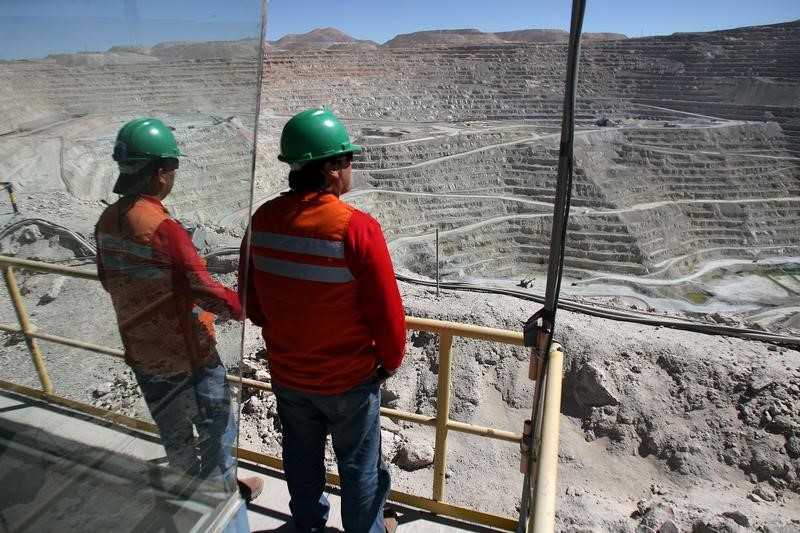(The opinions expressed here are those of the author, a columnist for Reuters.)
By Clyde Russell
SINGAPORE, March 31 (Reuters) - The rally in commodity prices last year is starting to filter through to higher spending by miners, but the nature of how they are loosening the purse strings betrays the view that companies are still cautious about the outlook.
Mining service providers are generally one of the first groups to suffer cutbacks when prices turn down, but equally they are among the first beneficiaries when things turn around.
In the five years of declining prices from 2011 to 2015, mining companies universally tried to survive by stripping costs out of their operations, with many eventually even cutting sustaining capital.
It's this spending that is coming back into the market, according to several participants at this week's Mining Investment Asia conference in Singapore.
Sustaining capital is the miners' term for the money needed to keep the operation running at its present production rates, and includes items like replacing machinery and doing the necessary geological and engineering work to ensure that the next area to be mined is identified and prepared.
Most mines work on mine plans that detail the work to be undertaken in the coming years.
When a company cuts sustaining capital, it can continue to operate on the existing plan, but eventually it will need to put money back into the project to keep operating.
The more than doubling of the price of iron ore and thermal coal in 2016 has given miners some confidence that they can once again invest in their operations.
A Jakarta-based provider of specialised mining engineering services said on the sidelines of the conference that the number of projects his company has signed up in the first quarter of this year is about 50 percent higher than in the first quarter of last year.
"But the nature of the spending is different this time. They aren't expanding or building anything new, they are just making sure they can keep output going steady," he said, requesting anonymity as he isn't authorised to speak to the media.
A similar story was told by other mining contractors at the conference, who report increased order books, but not much work for greenfield projects.
What appears to be happening is that companies, having cut spending to the bone, are now having to put money back into their operations in order to keep production steady, in other words they are now spending cash to stand still.
Several contractors said this appeared to the case with many companies operating in Indonesia's coal, copper and gold sectors, and Australia's coal, gold and iron ore mines.
It also extended from major companies, such as Anglo-Australian giants Rio Tinto (LON:RIO) RIO.AX and BHP Billiton (LON:BLT) BHP.AX , right down to smaller, family-owned coal mines in Indonesia.
M&A REBOUNDING
Another sign of health in the mining services sector is the rising level of merger and acquisition activity across Asia and Australia.
In Australia, the number of announced deals so far this year is more than double that of the first quarter of 2016, according to data presented at Mining Investment Asia by Nicholas Assef, the executive director of boutique investment banking firm LCC Asia Pacific.
While some of these deals are agreed takeovers, there have been hostile attempts, such as Downer EDI's DOW.AX $1 billion bid to buy cleaner-caterer Spotless Group SPO.AX and Cimic Group's CIM.AX stalled bid for mining contractor Macmahon Holdings MAH.AX .
What the flurry of M&A activity in the mining contracting sector likely shows is that companies are looking at ways to build capacity ahead of an anticipated upswing in demand for their services.
But it's worth noting that so far the increase in demand for mining services isn't translating into new mining projects across the Asia-Pacific region.
One consistent theme at the conference was that miners, especially junior explorers seeking to transition to production, are finding it hard to obtain finance.
Investment banks are still placing hurdles that are too high on projects, the initial public offering market is still viewed as unattractive for mining projects and private equity players will only invest when the project is far enough advanced that it probably doesn't need cash anymore, Alberto Migliucci, chief executive of Petra Commodities, told the conference.
The most viable method for miners to access cash is through high net-worth individuals and families, who are prepared to take a longer view on the potential returns if they like the project and the management, he said.
Overall, it seems that while the mining sector is starting to turn around after the 2011-15 commodity price slump, it's a long way from resembling the boom days that accompanied the recovery from the 2008 global recession.
<^^^^^^^^^^^^^^^^^^^^^^^^^^^^^^^^^^^^^^^^^^^^^^^^^^^^^^^^^^^ GRAPHIC on Australia capex vs RBA commodity price index
http://tmsnrt.rs/2mUqtmN
^^^^^^^^^^^^^^^^^^^^^^^^^^^^^^^^^^^^^^^^^^^^^^^^^^^^^^^^^^^> (Editing by Joseph Radford)
